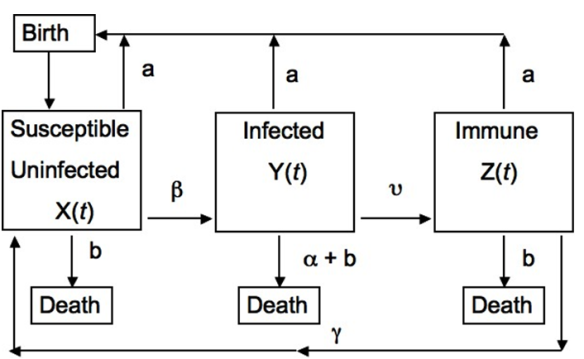Edit: It has come to my attention that this page is one of the top google hits for “microparasite,” “macroparasite,” and “microparasite vs. macroparasite.” Since dozens of people end up here every day, I’ve remodeled this post to be more informative. I hope this helps! If you can think of something that I should add, let me know in the comments! Thanks for visiting!
Microparasites vs. Macroparasites
The main distinction between microparasites and macroparasites is whether they “multiply” within their definitive host or not. Microparasites do “multiply” in their definitive host, and macroparasites do not “multiply” in their definitive host. This distinction is important because it influences the ecology and epidemiology of micro and macroparasitic infections.
“Multiply” vs. “Reproduce”
Why am I saying “multiply” instead of “reproduce?” Because both microparasites and macroparasites may reproduce in the definitive host. However, in macroparasites, reproduction usually leads to the production of eggs or larval stages that then leave the definitive host. That is, reproduction occurs, but the host does not end up with more parasites. Microparasites use direct reproduction; reproduction leads to an increase in the number of parasites within the host.
Microparasite Infections and Microparasite Examples
Microparasites are tiny!
They tend to have very short generation times in comparison to their hosts. Compare your life span to that of viruses, bacteria, and fungi, which are the main ‘groups’ of microparasites.
In microparasite infections, the intensity of disease/pathology and infectiousness tend to be determined by whether the host is infected or not. (At least, they can usually be modeled that way.) That is, if you are infected, you probably have many, many parasites, because the parasites have high reproductive rates. In other words, the number of parasites per host is not as important as it is in macroparasite infections.
Hosts tend to develop immunity to microparasites.
Here are some good examples of microparasites:
- Malaria (protist)
- Giardia (Protozoan)
- Viruses (influenza, hepatitis)
- Fungi (ringworm)
Macroparasite Infections and Macroparasite Examples
Macroparasites are bigger, and include things like helminths and arthropods.
They have relatively long generation times.
Macroparasite infections tend to be chronic, and they are accumulated relatively slowly.
Hosts don’t usually develop immunity to macroparasites, or else the immunity is short-lived and/or only happens with high parasite burdens.
Here are some good examples of macroparasites:
- Ticks (Arthropod)
- Schistosomes (Flatworm)
- Roundworm (Nematode)
Modeling Microparasites and Macroparasites:
I originally wrote this post because I was reading Anderson and May’s (1991) “Infectious Diseases of Humans.” Early on, they defined microparasites and macroparasites and explained why we model them differently. I’ve basically given you a synopsis of their definitions, and now I’ll briefly touch on modeling.
As with any model, your decisions about what type of model you want to use will depend on a variety of things. But in general, it makes sense to model microparasite infections with ‘compartmental models’ and presence/absence of infection. You’re infected, or you aren’t, and if you are infected, then you have the “average” parasite load. Again, this is because these parasites multiply quickly within the host.

Anderson’s compartmental model, taken from here.
If you’re modeling macroparasite infections, the distribution of parasites becomes more important. In hosts that are infected, most will have very few parasites, and some will have very many parasites. Transmission and pathology will likely depend on the number of parasites per host. Therefore, using a “present and average” type of model may not be useful (depending on your question).
Hope this helps!
